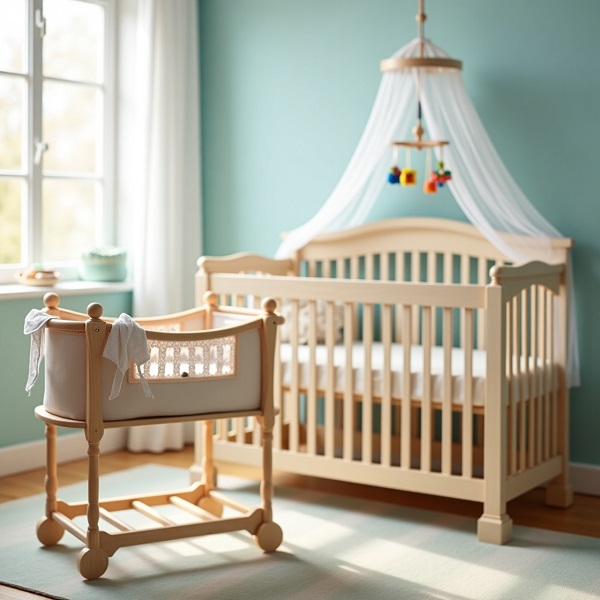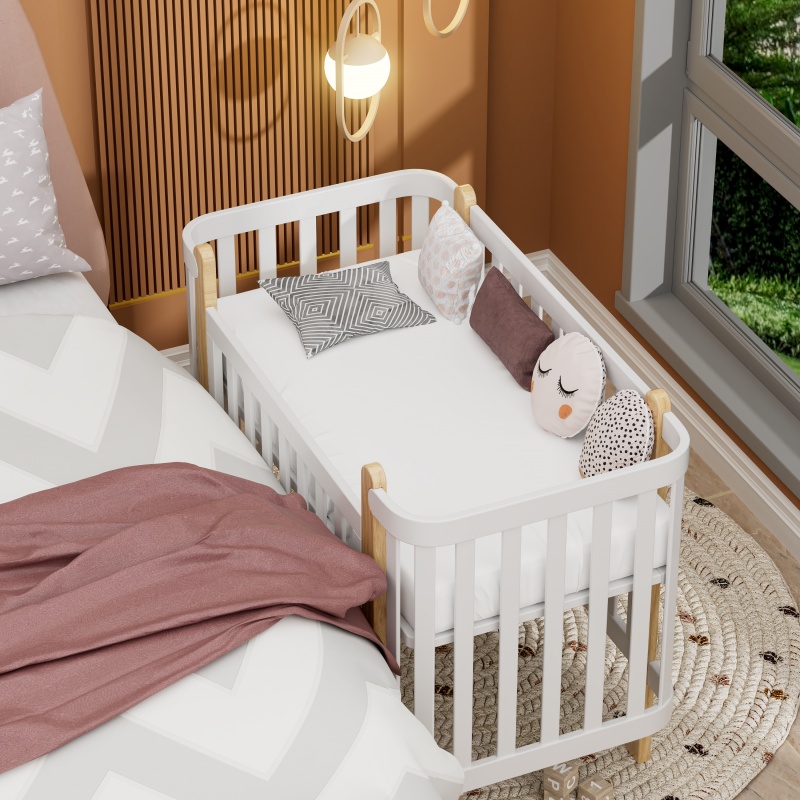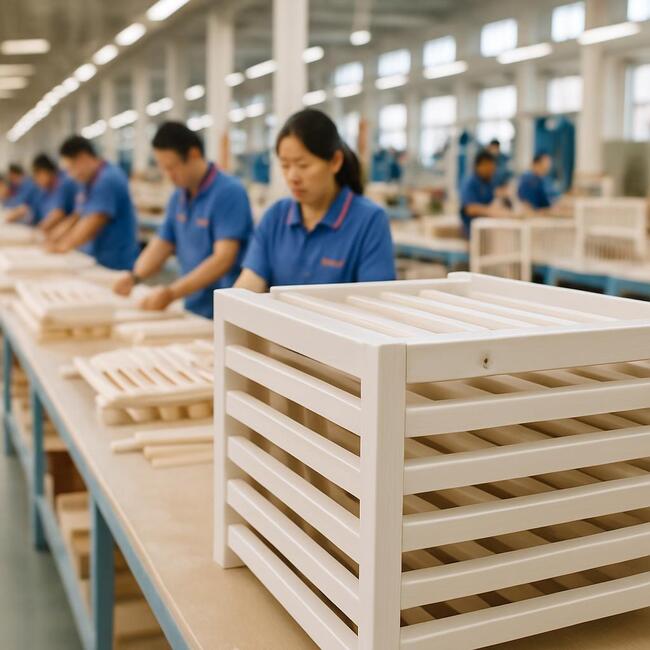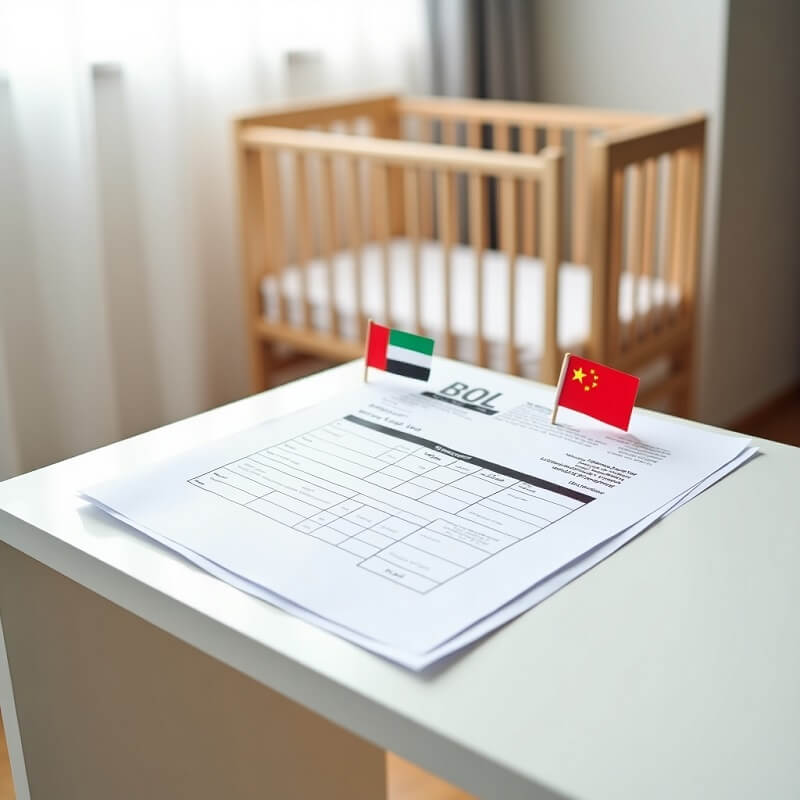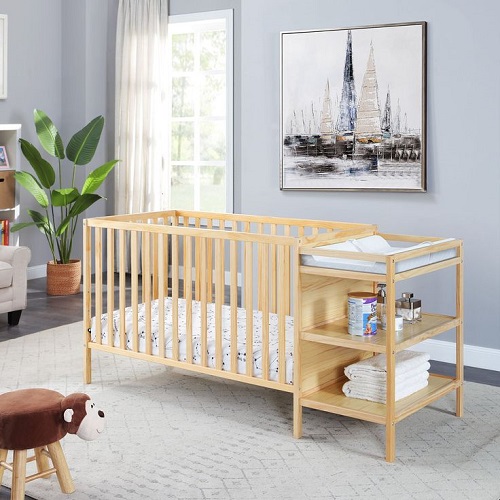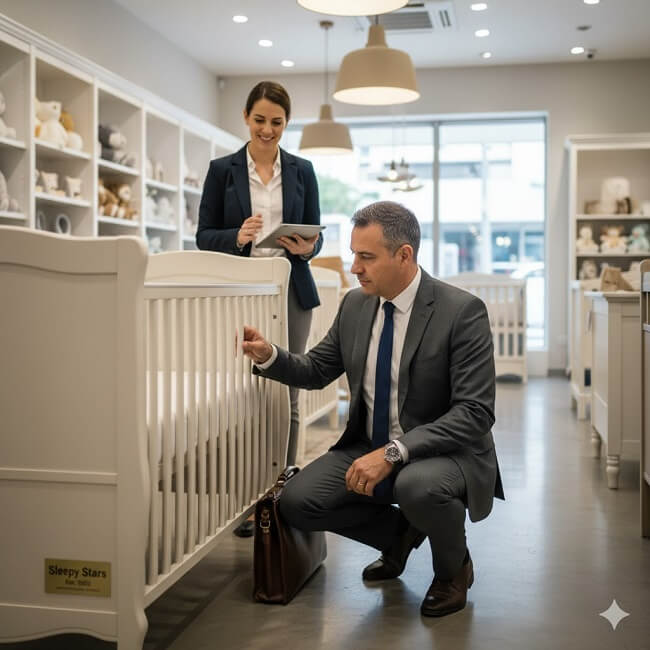At first glance, the decision between a bassinet and a crib may seem like a matter of style or convenience. But for newborns, it is far more consequential than that.
Newborns sleep differently from older infants and children. Their circadian rhythms are undeveloped, their sleep is lighter and more fragmented, and they require frequent overnight feeding and monitoring. These factors make sleep space a critical consideration—not just in terms of comfort, but also accessibility, safety standards, and adaptability to the realities of early parenting.
Bassinets, designed specifically for the newborn phase, offer proximity and portability that cribs do not. Cribs, on the other hand, provide a longer-term solution that some argue is more stable and secure.
In the following sections, we’ll break down how newborn sleep differs, examine the structural and functional distinctions between bassinets and cribs, and consider what science and safety guidelines suggest.
Why Newborn Sleep Is Different?
Sleep Cycles: Short, Frequent, and Light
Unlike adults who cycle through 90-minute sleep phases, newborns operate on 50-60 minute ultradian rhythms according to Stanford Children’s Health.
They spend nearly 50% of their sleep in active (REM) sleep—a lighter, easily disrupted state where startling (the Moro reflex), irregular breathing, and facial twitching are common, as noted in an NIH study on infant sleep architecture. This explains their frequent wakefulness and the importance of a stable sleep environment.
Breathing and Temperature Regulation Challenges
In the first few months, newborns breathe solely through their noses, and their narrower airways make them more vulnerable to obstruction.
Their ability to regulate body temperature is also underdeveloped—the NIH reports that overheating is linked to increased SIDS risk.
These physiological factors explain why pediatricians insist on firm, flat surfaces that reduce rebreathing risks and why smaller sleep spaces may help maintain stable warmth.
The “Womb Transition” Factor
Research supporting the fourth-trimester theory suggests newborns benefit from contained spaces that mimic the womb’s boundaries. Studies at Brigham and Women’s Hospital found that swaddled infants in bassinets showed fewer startle awakenings and more consolidated sleep stretches in the first 8 weeks, as reviewed by Harvard Medical School.
Key Takeaways for Parents
Newborn sleep differs from adult sleep in three key ways. First, their delicate sleep-wake cycles need calm, stable environments. Second, their physical vulnerabilities require highly secure sleep surfaces. Third, their instinctive need for containment, shaped by womb life, affects their early sleep preferences.
This combination explains why bassinets often work well initially, but also why transitioning to a crib becomes necessary as development progresses.
What’s the Difference Between a Bassinet and a Crib?

Size and Portability
Bassinets are notably smaller, typically measuring about 25-30 inches in length—just enough space for a newborn to sleep comfortably. Their compact design makes them ideal for bedside placement, supporting the AAP’s guideline for room-sharing without bed-sharing. Many models include wheels or rocking features, allowing easy movement between rooms.
In contrast, standard cribs offer nearly twice the length (around 52 inches) and are designed as stationary fixtures due to their weight and size.
Weight Limits and Longevity
The most practical difference lies in the duration of use.
Most bassinets are suitable for babies up to 15-20 pounds or until they start pushing up on their hands and knees, usually around 4-5 months. This temporary use aligns perfectly with the fourth trimester period when newborns benefit most from contained spaces.
Cribs, however, are built to last, supporting children up to 35-50 pounds (often through age 2-3 years) with adjustable mattress heights that adapt as babies grow more mobile.
Safety Standards and Design Features
Both products must meet CPSC safety standards, but their designs address different risks.
Bassinets prioritize:
- Breathable, typically mesh sides to prevent air pockets from forming
- Smaller dimensions that may reduce startle reflex awakenings
- Reduced mattress heights for more convenient access during nighttime feedings
Cribs focus on:
- Slat spacing is strictly controlled to avoid head entrapment, ensuring a maximum gap of 2⅜ inches
- Fixed, non-adjustable sides to prevent collapse
- Structural stability for active infants who may shake the rails
Physiological Considerations
The smaller footprint of bassinets may help regulate temperature more effectively for newborns, while their portability supports breastfeeding mothers by minimizing nighttime movement.
However, cribs become essential once babies begin rolling or sitting up independently, as their sturdy construction prevents tipping and provides adequate space for safe movement.
Which One Is Safer for Newborns?
The American Academy of Pediatrics’ safe sleep guidelines don’t actually prefer one over the other—they simply mandate a flat, firm surface with specific dimensional requirements. The key issue isn’t “Which is better?” but whether the product meets current safety standards and is used correctly.
Both options can provide a safe sleep environment when they adhere to guidelines.
The AAP emphasizes that all infant sleep spaces must have a firm, flat surface with no soft bedding, pillows, or loose items.
Bassinets must have stable bases, breathable mesh or properly spaced slats, and no drop-side mechanisms. Cribs, on the other hand, are built to last through toddlerhood and must meet strict structural requirements, including fixed sides, precise slat spacing (no more than 2⅜ inches apart), and adjustable mattress heights.
Potential Risks to Watch For
While both options are safe when used correctly, certain risks are more commonly associated with each.
Bassinet-related incidents often stem from improper assembly, exceeding weight limits, or using aftermarket accessories like inclined sleepers, which are not recommended.
Crib safety issues typically arise from using older models (particularly those made before 2011, when drop-side cribs were banned), ill-fitting mattresses, or failing to adjust the mattress height as the baby grows.
Do Newborns Sleep Better in a Bassinet or Crib?
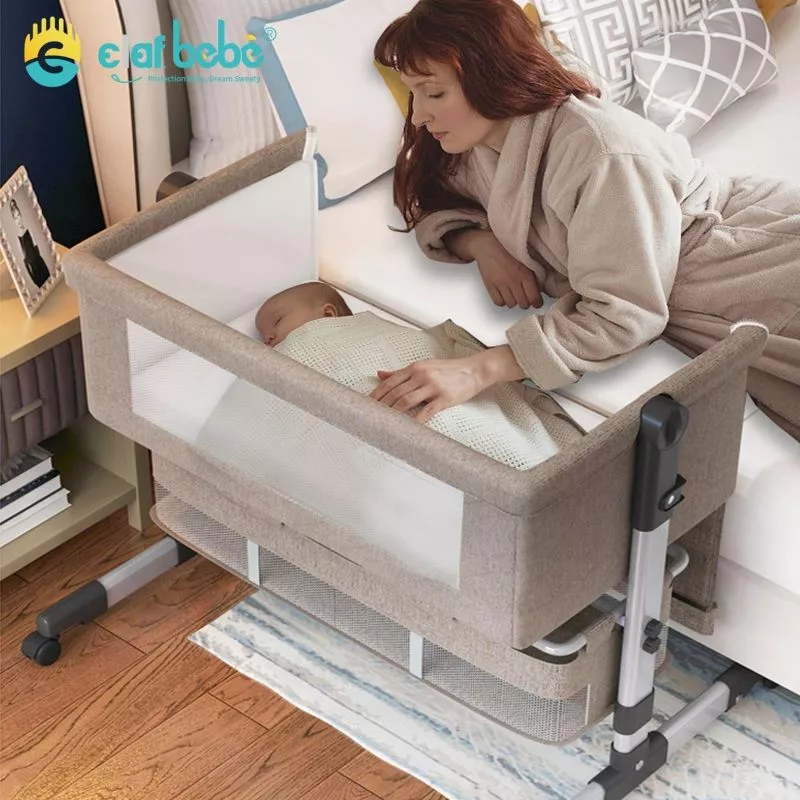
Sleep is one of the most coveted (and elusive) goals in the early weeks of parenthood. So it’s natural to ask: Will my newborn sleep better in a bassinet or a crib?
It doesn’t have a universal answer. Research and parental experience suggest that each option has distinct advantages when it comes to infant sleep quality.
Bassinets are designed with newborns’ unique physiology in mind. Their smaller, more contained space mimics the snugness of the womb, which can help ease the transition to life outside the uterus. Studies have shown that newborns often experience fewer startle reflexes (the Moro reflex) in bassinets, leading to less disrupted sleep.
The proximity factor also plays a role. Since bassinets are typically placed right next to parents’ beds, nighttime feedings and soothing can happen with minimal disruption. This closeness may help regulate a newborn’s breathing and temperature, as parents can more easily monitor and respond to their baby’s needs.
Research shows that responsive caregiving is associated with more stable infant sleep patterns over time, even if it doesn’t immediately result in longer stretches of sleep.
By contrast, cribs offer more space and airflow, which can be beneficial for long-term sleep hygiene but may not be as comforting in the newborn phase. Some babies startle more easily or may feel less contained in a crib, especially if placed in a large room.
However, cribs maintain consistent sleep conditions as babies grow. Unlike bassinets, which require an eventual transition to a crib, starting with a crib means no disruptive changes in sleep environment. This can be particularly helpful for babies who are sensitive to changes in their surroundings.
A 2022 study published in Sleep Medicine found that while newborns in bassinets tended to wake slightly less frequently in the first 8 weeks, there was no significant difference in total sleep time between bassinet and crib sleepers by 3 months of age. The study concluded that parental consistency with sleep routines mattered more than the type of sleep space.
If the goal is to maximize comfort and convenience during the chaotic early weeks, a bassinet may offer an edge. But if you’re focused on long-term routine and have space in your bedroom for a crib, starting with a crib is also a reasonable choice, especially if your baby shows no discomfort.
How Long Can a Baby Sleep in a Bassinet?
Weight Restrictions Determine Maximum Use
Each bassinet has a weight limit, typically between 15 and 20 pounds. Manufacturers determine this limit based on the structure’s stability and support capacity. Parents should transition to a crib once their child approaches this limit.
Developmental Progress Signals Transition Time
Three key milestones require an immediate transition to a crib: when babies start rolling over, pushing up on their hands and knees, or sitting unassisted.
Height Considerations Matter Too
Some babies exceed the bassinet’s length before reaching weight limits. If an infant’s head or feet consistently touch the ends of the bassinet during sleep, the space has become too small.
Recognizing When to Transition
Several signs suggest a baby has outgrown their bassinet: visible discomfort or restlessness, frequent contact with the sides, or any shifting or shaking of the structure when the baby moves. These behaviors suggest the space no longer adequately supports the infant’s sleep needs or safety requirements.
Which Option Works Better in Small Spaces?
Bassinets almost always win in terms of spatial efficiency. Their compact footprint is one of their biggest advantages, particularly in the newborn stage when room-sharing is recommended by pediatric experts.
Their portability offers additional flexibility—lightweight frames and optional wheels allow parents to easily move the sleep space between rooms as needed throughout the day. This adaptability proves particularly valuable in studio apartments or homes where living spaces serve multiple functions.
Cribs, on the other hand, are static by design. While they provide a long-term sleep solution, most cribs are too large to fit comfortably next to the adult bed in tight quarters. Even mini cribs—while smaller than standard cribs—can still dominate a small room. They’re also heavier and more difficult to reposition, making them less adaptable for daily routines.
If you’re working with tight quarters, a bassinet offers clear advantages in the short term.
Conclusion
Bassinets offer undeniable convenience in the newborn phase—their compact size makes them ideal for room-sharing, and their cozy design can help ease the transition from womb to world. Yet its usefulness is short-lived, and as your baby grows stronger and more mobile, a crib becomes not just the safer option, but the necessary one.
For many families, the ideal approach is a two-phase solution: Start with a bassinet for those first precious months of close proximity, then transition to a crib as your baby grows. However, if space and budget allow, investing in a high-quality mini-crib from the beginning can provide continuity and simplify your routine.
Recommended Related Articles:
- Are Moses Baskets Safe? What You Need to Know
- Rocking Bassinet for Newborns: A Complete Guide
- Co-Sleeper vs Bassinet: Which Is Right for Your Baby?
- What to Look for in a Bassinet?
- Bassinet Weight Limits: What You Need to Know
- Top 15 Bassinet Manufacturers in China
- When to Move the Baby out of the Bassinet?
- Travel Bassinet for Baby: A Comprehensive Guide

